Hiking and exploring the old wolfram mines at the base of the Paluma Range was a day out and about we thoroughly enjoyed!
Led by Glen, we set off in warm and humid conditions with seasonal streams in the area still flowing well after the recent rains.
On this adventure, we followed what is known as “Bell’s Track”, named after Henry Bell.
“Henry Bell had a butchery and store near Moongobulla in the 1890s. Miners would place orders with him when they had enough tin to cover costs, and Henry’s sons would deliver the stores with packhorse teams. The tracks Bell used are not recorded but are likely to have been up the ridges in the vicinity of today’s range road. Bell’s store was resupplied by a charter boat which came up 0llera Creek from Townsville to a landing to unload stores and backload tin” (Paluma, The First 80 Years: Linda Venn)
In relation to the above, I have heard that the charter boat was possibly more like a “barge” and would be loaded where Ollera Creek crossed what is now the Bruce Highway and from there, make it’s way up Ollera Creek to supply the store and a workforce numbering in the hundreds at any one time.
We were treated with some clear views out over the adjacent coastline and surrounding areas as we gained elevation.


We stopped to photograph and document numerous mining relics along Bell’s Track, including an old pump station, a memorial etched into a tree, an old vehicle, still with the crank attached, rusted water tanks and pipework and an old car engine, complete with the gearbox which appeared to power the pump station. We also came across many old dig sites and mining shafts, surrounded by mounds of crushed and piled rock.


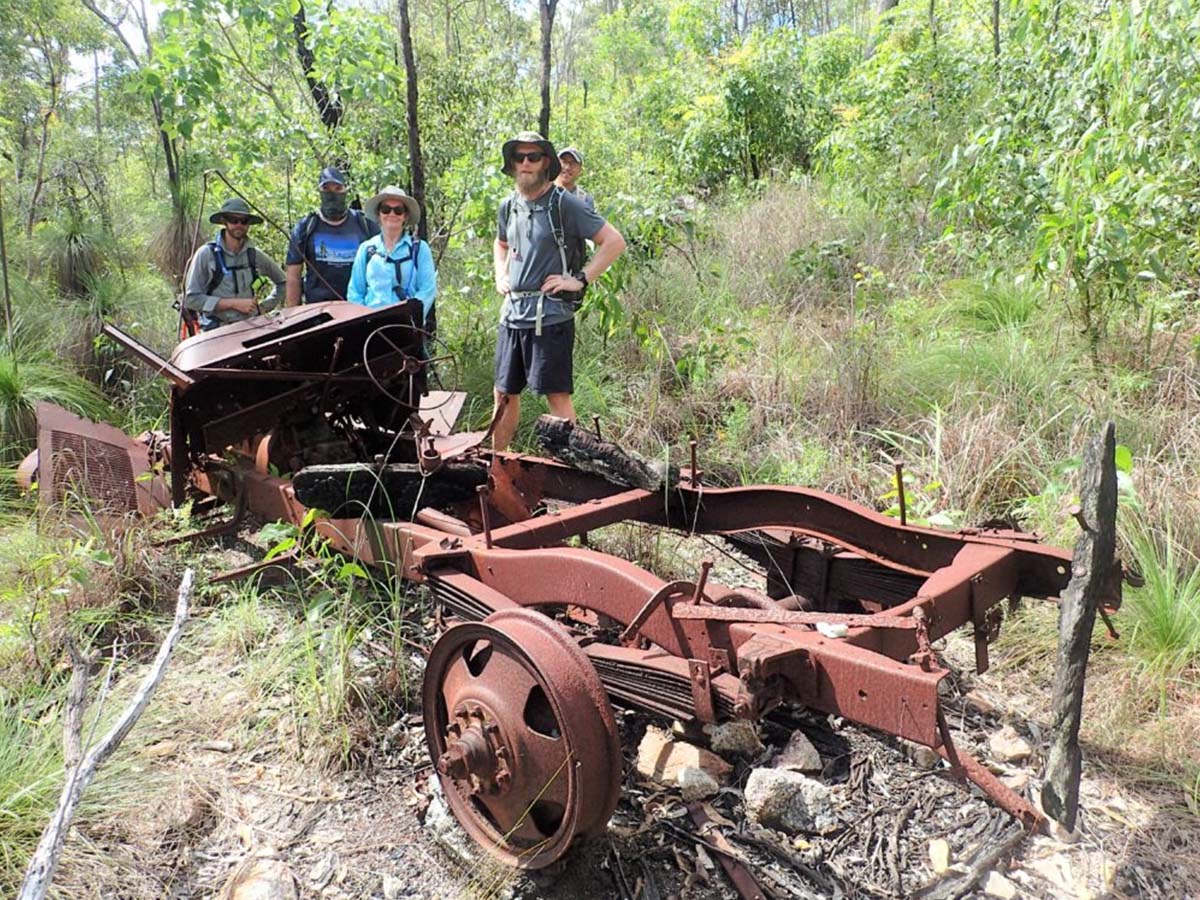

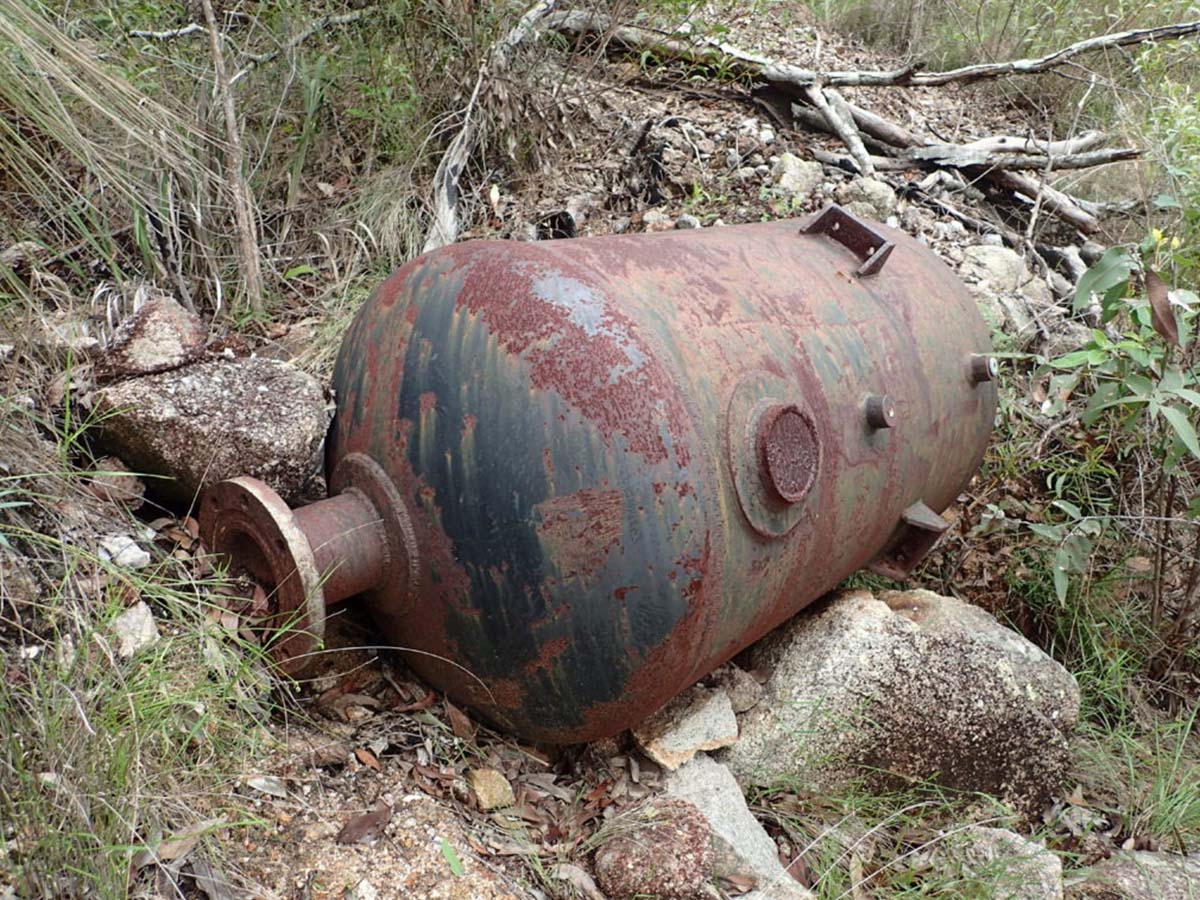

The highlight was the old mining hut which to my knowledge has been pillaged in previous years, probably due to the fact the location has been irresponsibly shared and has unfortunately attracted some that have no regard for the historical importance of such a site.
The hut is still impressive and appears to have had a stable next door. We came across remnants including old cooking utensils, a bridle and the door from an old wooden stove. There are also many old bottles strewn around the area. We identified medicine and beer bottles, some of which have unique markings. An old bush toilet appears to have stood close to the hut under a massive mango tree – I can just picture a dirty, tired and exhausted wolfram miner, snacking on a fresh mango or two after a long day’s work while a bush stew boiled away in the old wooden stove. Accompanied by his pack horses and an ale or two, he would have been able to have a wash in the seasonal creek that flows directly behind the hut.

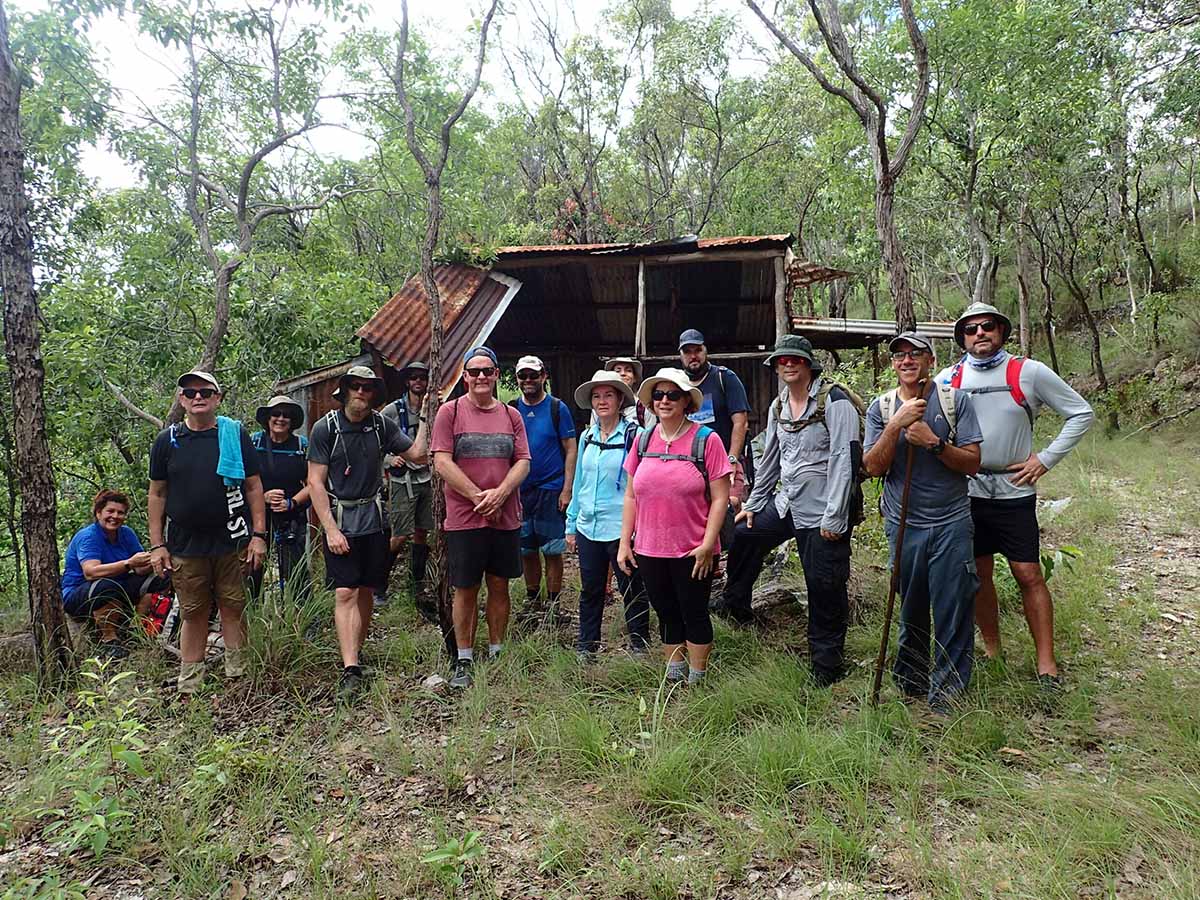
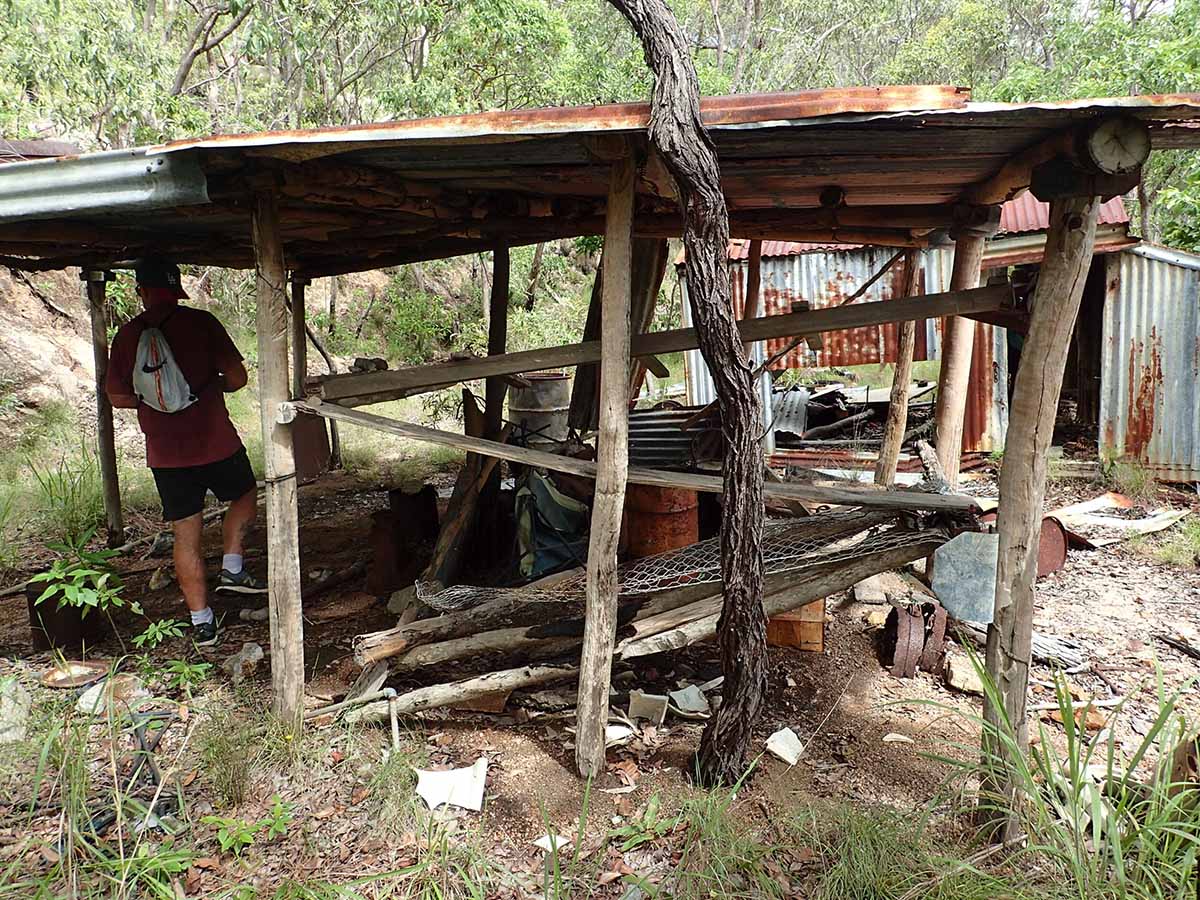

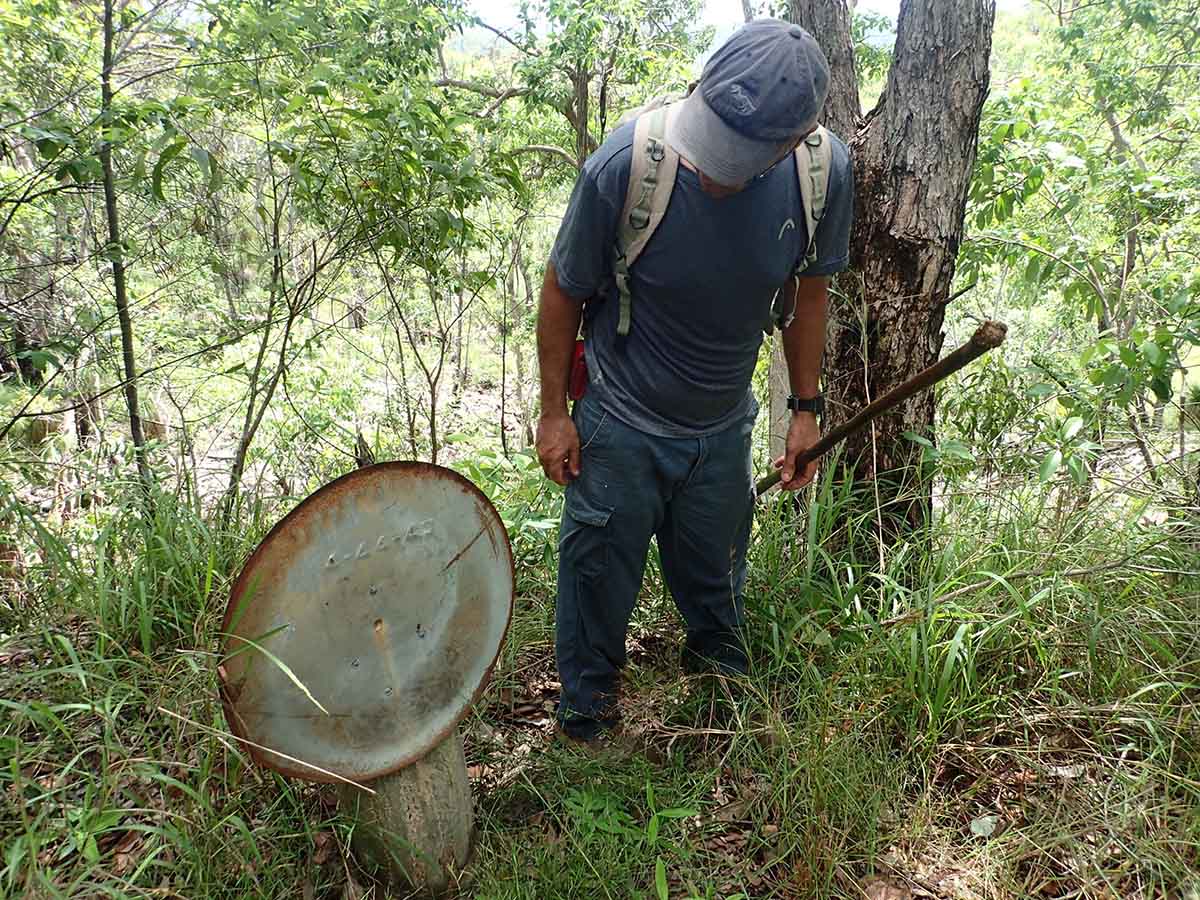

There is an impressive underground mining shaft close to the hut, still with the original wooden supports and air vents that rise to the surface to ensure the miners had an adequate and clean supply of oxygen. Beams of light from the surface can be seen shining into the mine shaft from these air vents. Sadly, the shaft is now filled with water and bats and unsafe to enter.

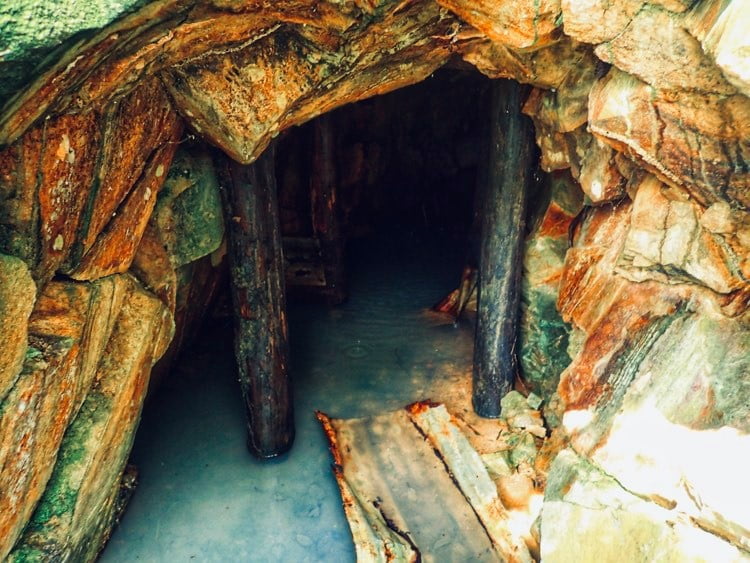
After exploring the area, we made our way back to the start point, having enjoyed another beautiful morning hiking and exploring a remote spot of enormous historical significance and importance to our region.



